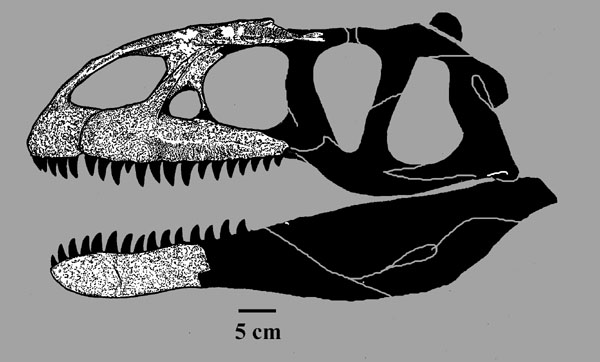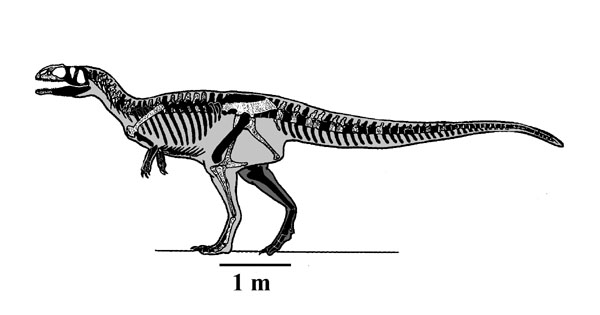
Species: salerii HUTT, MARTILL & BARKER, 1996
Etymology: In honor of Mr. Salero, owner of the land on which the specimen
was discovered.
= Genus nova. HUTT, SIMMONDS & HULLMAN, 1990
Holotype: BM R10001/MIWG 6348
Locality: Grange Chine, Brighstone Bay, south west coastline of the Isle of Wight, England.
Horizon: Wessex Formation, Wealden Group.
Biostratigraphy:
Age: Barremian Stage, Lower Gallic Subepoch, Early Cretaceous Epoch, Early Cretaceous.
Material:
BMNH R1001: Anterior portion of left dentary, 6 cervical vertebrae (including the axis), 5 dorsal vertebrae, most of pelvic elements, fragments of 2 ribs and tooth fragments.


MIWG 6348: Left and right premaxillae, left maxilla, right nasals, 5 dorsal
vertebrae, 3 sacral vertebrae, 22 caudal vertebrae, 3 haemal arches, left scapulocoracoid,
several gastralia, some of the pelvic bones, right femur, left tibia, left
fibula, left MT II and IV, and several phalanges including unguals.
Note: Pathological union of chevron to 2 caudal vertebrae (NAISH, HUTT & MARTILL,
2001), also healed fracture of mid-caudal vertebra transverse process, osteophytes
affecting pedal phalanges, healed gastralia rib fractures, some forming false
joints, and a scapula fracture (TANKE & ROTHSCHILD, 1999)
Referred material:
MIWG 6352: 2 sacral vertebrae, paired pubes, and incomplete left ilium of a subadult.
Another specimen has been found. (HUTT, pers. comm.)
HUTT, 2001
MIWG 4199: Phalanx.